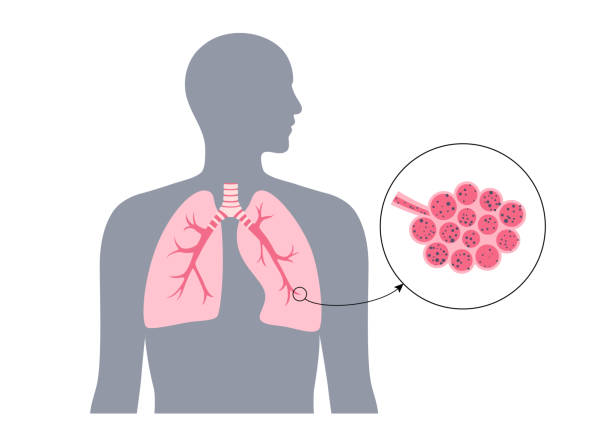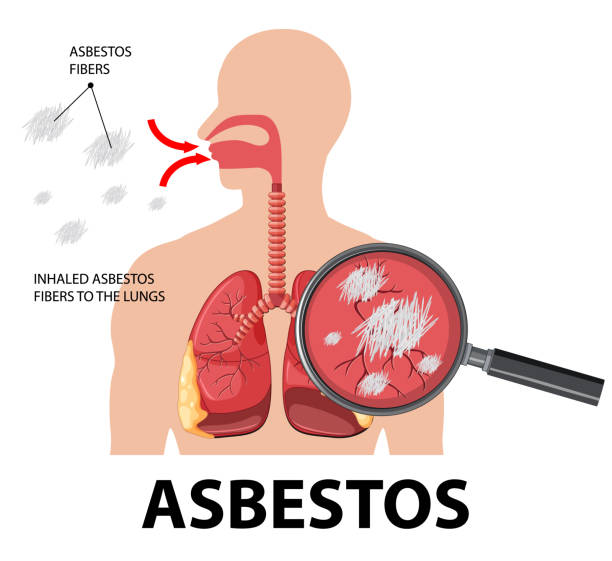When asbestos fibers are disturbed, they can become airborne and, if inhaled, pose severe health risks. The primary concern is the damage these fibers cause to lung tissue and the respiratory tract, leading to asbestos-related diseases.
Health Effects Of Asbestos Exposure

Exposure to asbestos primarily affects respiratory health due to the inhalation of fine fibers, which can cause several health complications.
The main health effects of asbestos exposure include:
- Inflammation: Tiny asbestos fibers can cause inflammation in the lung tissues and pleura (the lining around the lungs). This inflammation is a response by the immune system attempting to remove the fibers, but instead, it can lead to tissue damage and scarring.
- Fibrosis: Prolonged inflammation can lead to fibrosis, which is the thickening and scarring of connective tissue. In the lungs, fibrosis reduces elasticity and impairs the ability to breathe.
- Impaired Lung Function: As fibrosis worsens, lung capacity and airflow can be significantly diminished, leading to difficulties in breathing, decreased exercise tolerance, and reduced oxygen exchange.
- Immune System Effects: Chronic asbestos exposure can alter the immune response, potentially reducing the body’s ability to fight other diseases and increasing susceptibility to infections.
These health effects directly contribute to the development of severe diseases such as asbestosis, lung cancer, and malignant mesothelioma, each characterized by progressive and often fatal outcomes.
How Much Asbestos Exposure Causes Cancer?

The relationship between asbestos exposure and cancer is dose-dependent, meaning the risk increases with the amount and duration of exposure.
However, there is no safe level of asbestos exposure that is known to be completely free of risk for causing cancer.
Here are the key points regarding asbestos exposure and cancer risk:
Cumulative Occupational Exposure
Cancer risk is related to the cumulative amount of fibers inhaled over time. The longer and more intense the exposure, the greater the risk of developing lung cancer, mesothelioma, and other asbestos-related diseases.
Type of Asbestos
Different types of asbestos fibers, such as chrysotile, amosite, and crocidolite, have varying potencies in causing cancer. Crocidolite (blue asbestos) is considered more hazardous than chrysotile (white asbestos) in terms of cancer risk.
Smoking and Asbestos
The combination of smoking and asbestos exposure significantly increases the risk of lung cancer compared to either smoking or asbestos exposure alone.
Mesothelioma Risk
Unlike lung cancer, mesothelioma (a cancer affecting the lining of the lungs or abdomen) can occur with relatively low levels of exposure, and there are documented cases of mesothelioma where individuals have only brief exposures.
Latency Period
The time between exposure to asbestos and the development of cancer, particularly mesothelioma, can be very long, typically between 20 to 50 years.
There is a clear dose-response relationship between asbestos exposure and the risk of cancer, but even low levels of exposure can potentially lead to serious health outcomes.
What To Do If Exposed To Asbestos

If you suspect or know that you’ve been exposed to asbestos materials, it’s crucial to take the following steps promptly to manage the exposure and minimize potential health risks:
- Leave the Area: Immediately move away from the source of asbestos to avoid further inhalation of fibers.
- Avoid Disturbing the Material: Do not disturb materials that you suspect contain asbestos, as this can release more asbestos dust into the air.
- Report the Exposure: Asbestos workers or homeowners should alert the incident if the exposure occurred at a workplace or in a residential setting.
- Seek Medical Evaluation: Consult with a healthcare provider who specializes in occupational medicine or respiratory diseases. Mention your exposure to asbestos, and they may recommend lung function tests to establish a baseline for your lung health.
- Educate Yourself About Potential Risks: Understanding the potential health impacts of asbestos can help you monitor symptoms and seek timely intervention.
By following these steps, you can significantly manage and reduce the risks associated with asbestos exposure.

